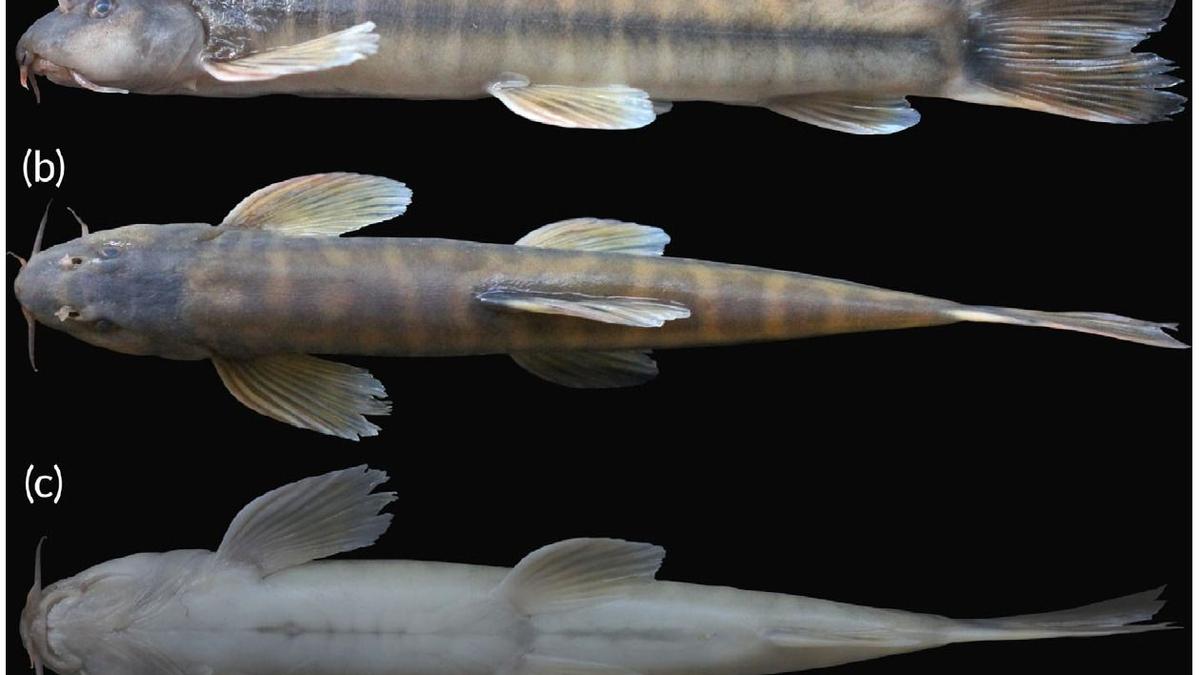Schistura densiclava

- 26 May 2025
In News:
A newly discovered species of cave-dwelling loach, Schistura densiclava, has been recorded from the Krem Mawjymbuin cave in the East Khasi Hills district of Meghalaya, India. This species becomes the sixth known cave-dwelling fish from the state, emphasizing Meghalaya’s rich subterranean biodiversity.
Taxonomy and Classification
- Family: Nemacheilidae (bottom-dwelling freshwater fishes)
- Type: Troglophile — adapted to live in caves but can survive and reproduce in surface (epigean) waters.
- Distinct Feature: Unlike typical cave fishes, S. densiclava retains pigmentation and functional eyes, indicating adaptability to both subterranean and overground aquatic environments.
Habitat and Environment
- Found 60 meters inside the Krem Mawjymbuin, a limestone cave with a surveyed length of 1.6 km and an altitude of 206 meters.
- The species inhabits a cool, fast-flowing stream with a temperature of 18°C and low oxygen levels.
- The cave is ecologically sensitive and was previously in the news due to a local ban on worship at a Shivalinga-like formation within it.
Morphological Characteristics
- Coloration: Pale yellow-green body with 14–20 greyish to faint black vertical bars.
- Named densiclava due to the thick dark stripe near the dorsal fin ("densiclava" = Latin for "thick stripe").
- Sexual Dimorphism:
- Males: Slimmer with irregular patterns and puffier cheeks.
- Females: Sturdier with more consistent markings.
Scientific Significance
- Genetic testing confirmed Schistura densiclava as a distinct and previously unrecorded species.
- Its endemic distribution, limited to a single cave system, marks it as a species of high conservation concern.
- The discovery was published in the Journal of Fish Biology by a team led by Kangkan Sarma from Gauhati University, along with other Indian ichthyologists.
